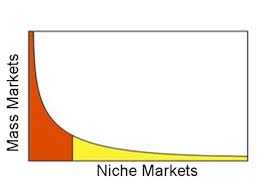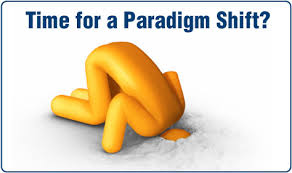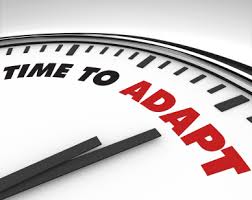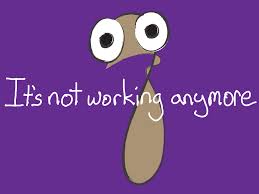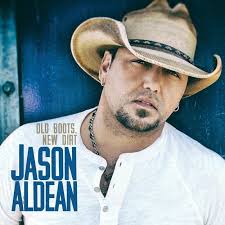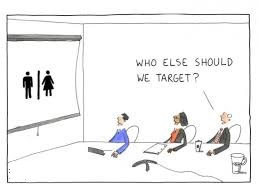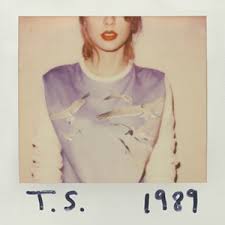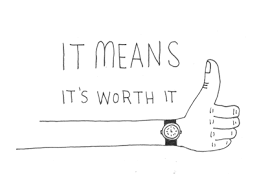

@rg
Category: music industry
Consumers really want to buy music.
I keep hearing everyone complain from the bottom and from the top that record sales are down; consumers aren’t buying. 
This is true.
Why?
Why aren’t people buying music like they used to if they really want to buy music?
Music is such an important part of so many of our lives. Is it that we just don’t care these days?
Are we in danger of having a society where music just isn’t present in the fabric of our lives?
No, it’s not that we don’t like music anymore as a society.
Consumers aren’t buying music because we aren’t reaching them.
The methods and dynamics to connecting with consumers has changed, therefore the marketing needs to change to influence their buying 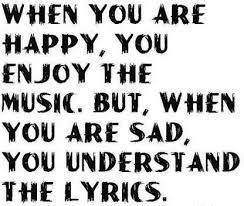 decisions.
decisions.
For the most part it hasn’t. We keep holding on to what used to work and by “we” I mean all of us; indie artists and major labels.
Either consumers aren’t aware of the product or they are aware of the product and don’t think it’s worth the price.
The previous statement was the very definition of ineffective marketing.
Yikes! They don’t think it’s worth it??
Access to the “mass market” is becoming more difficult and complex. The result is the mass market is nowhere near as “massive” as it used to be. This is because the mass market is continually fragmenting into smaller and smaller pieces.
As a big market disintegrates into smaller, more focused markets the definition changes from “mass market” to “niche market”.
As a marketer (of your music) you have to consider the fact that the mass market simply isn’t as easy to reach as it used to be because consumers have so many choices to hang out.
In any given media market, there used to be only 3 TV networks (CBS, NBC, and ABC), 1 or possibly 2 (genre specific) radio stations, 1 or 2 newspapers, and maybe MTV for consumers to receive input about any product, project, or artist.
Think about how easy that was for the record labels to reach us when we were such a captive audience. 
Now we have well over 500 channels on TV in addition to the initial 3 networks.
There are endless possibilities for consumers to devour radio including their 1 or 2 local terrestrial radio stations, HD Radio, Satellite Radio, I Heart Radio (1,000 stations), Pandora, Spotify, Deezer, Slacker, personal playlists, etc.
Every magazine, YouTube, social media, and countless music sites are accessible online at anytime, anywhere in the world from a smartphone.
There is a fundamental, paradigm shift happening right now in the music industry.
Simply put, the methods that were once effective in exposing consumers to new music and influencing their buying decisions has gone through a drastic change.
These formerly effective methods were geared towards communicating to and converting a mass market.
The WHOLE industry will have to change with it and adapt. Until then, it will continue to suffer.
Consider this, as indie artists and human beings for that matter, our understanding of our everyday reality is directly related to the input we receive.
Think about that concept outside the realm of marketing music for a second. 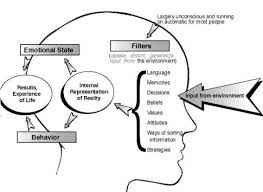
- Poor children aren’t aware that they are poor until they are exposed to how the other half lives.
- Children of famous parents aren’t aware that their parents are famous until they are exposed to other children whose parents aren’t famous.
- Mentally and physically abused people are sometimes not aware (or forget over time) that there are more peaceful ways to live because they get only one kind of input.
- People that are constantly told they are bad, horrible, not important, etc., will ultimately begin to believe that if it is the only stimulus they are exposed to.
We are all products of the input we receive in life and, of course, input from the market place is equally applicable.
The input we receive becomes our reality.
My point is when you think about marketing your music you naturally think about how music (in the form of your favorite artists) has been marketed to you in the past.
It’s the only input you have ever received with regards to music marketing, and it worked.
Not for you.
Not for the major labels either.
Shania Twain’s “ Up! ” was certified 11 million units sold in September 23 rd , 2004. 
10 years later, Jason Aldean’s “ Old Boots, New Dirt ” was the best-selling country record of 2014 and it barely cracked 1 million in sales by December of last year.
Clearly the record labels haven’t got it figured out yet, man.
So why follow them?
Consumers haven’t stopped wanting or liking music. The way in which they receive their input about music has drastically changed due to technology and a fragmented marketplace.
So, in a way, they’re starving for good music, they just can’t find it in the new marketplace. They can’t find it because we aren’t getting it to them in a language/manner they find acceptable.
The artists and labels that have figured this out are thriving.
Listen, consumers are just as desperate to be turned on to really good music as you are to sell it to them. Crazy, huh?
The new way for receiving this marketing stimulus via social media and content marketing through email and text exchanges is consumed  COMPLETELY differently than the mass media branding methods that were effective before.
COMPLETELY differently than the mass media branding methods that were effective before.
Systems and strategies for addressing mass media don’t work for private, one on one interactions which is how social media, text messaging, and emails are consumed.
Once the fundamental changes to language and the approach have been internalized, understood, and executed masterfully music sales will rise.
Huh?
Taylor Swift provides us with proof of concept on this statement.
While Jason Aldean is an undeniable superstar at the top of his game with TONS of country radio support for his new record, he barely broke 1 million copies.
Taylor Swift released “ 1989 ” in 2014 and it was certified 4 million in sales January 22 of this year and she did it WITHOUT any help from country radio .
She knows how to communicate with her audience effectively in the new marketplace and she has the sales to prove it.
Not only is Taylor’s audience aware that her new record was released, they all felt it was worth it.
Right now I want you to quit lamenting the fact that you aren’t as popular as Taylor Swift and concentrate on the concept here. COUNTRY RADIO ABANDONED this artist and still, she QUADRUPLED the sales of the #1 selling record that country radio unwaveringly supported!
How did that happen?!?!?! Your future as an artist lies in the answer to this question, people. 
You hear Jason Aldean’s singles every day, multiple times a day on the radio, every single he’s released is in heavy rotation.
You never hear Taylor Swift anymore on country radio (except for very recently but only on the limited number of NASH ICON stations which is a joint venture between Cumulus radio stations and Scott Borchetta’s NASH ICON label who is Taylor’s record label head…so that was just a matter of time).
In plain English, record sales are down because labels are not marketing properly. Period.
Your marketing sucks too.
That is if you even think about marketing.
People want music, people need music, and people continue to consume music.
Just not your music.
It’s about the marketing.
Artists need innovative marketing strategies.
Want some staggering proof that it’s all about marketing?
I’ll give you 2 examples.
This is the absolute dumbest most insanely unnecessary product ever produced.
I believe the infomercials for this product still run today.
That is because of only one reason, it sells .
It sells for only one reason, marketing.
Nobody NEEDS the Pasta Pro but the buyers all feel it is worth it because it’s marketed correctly.
Here is another example that is simply mind blowing. 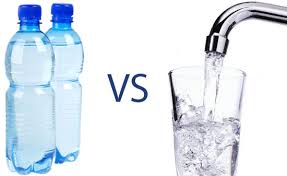
Bottled water.
Everyday people purchase a 1 liter bottle of water for $1.99.
On average. There are 3.7 liters in a gallon.
That equates roughly to $7.40/gallon for a product we can get for free.
We happily pay more for water, something we can obtain at no cost, than we do for gasoline.
This is because of marketing.
We feel like it’s worth it.
Bottom line to all artists and major labels, if you aren’t selling your music, it’s because people aren’t aware of it and the ones that are don’t feel it’s worth it.
What has to happen for consumers to think your music is worth it?
If we can sell free water for more than twice the price of a gallon of gas, we damn sure can sell music.
MusicClout.com
We read so much doom and gloom about the music business every day that it’s easy to think that pretty soon the whole thing will come crashing down. Cheer up. It’s not as bad as you think.
As all the various research and trade organizations begin releasing their sales figures, a number of them have jumped out to perfectly define the state of the music industry today. Check this out:
- US album sales were up 1.3% last year, the first year since 2005 that’s happened. 66% of these sales were CDs.
- There were 249 million albums sold in the US last year. People will tell you that the music industry is dying, but 249 million of anything is still a huge number.
- 75% of all CD sales were made offline. That means that people physically purchased the CD at a brick and mortar store or an event.
- 40% of all CD buyers are over the age of 45, which means that the demo that mostly grew up with CDs are the ones still buying them. But it also means that 60% of all buyers were under 45 too.
- Vinyl sales increased 37 percent in 2011, but only accounted for 1.2 percent of all physical sales. That doesn’t mean that people who buy vinyl actually listen to it though. Just like the old days, many still buy it for the cover, the artwork, the liner notes, and the trendiness (which is new).
- Rock is the most popular genre of music, with 32 percent album share, while pop music represents 40 percent of all current digital tracks sold. Ninety-three of the 100 best selling vinyl albums in 2011 fall within the Rock or Alternative genres. I guess that means that the hip-hop and rap trend has run it’s course.
- People who live in New York or LA buy more country records than those who live in Nashville by almost 2 to 1. Having just come from a speaking tour in Nashville, I can tell you first-hand that it’s a very cosmopolitan music town, with country no longer the major part of the industry as it once was. That said, country music represents 13% of the total album sales.
- Digital country music sales are up 31% over last year. While it might have been true at one time that country music lovers were slow to get into digital music, that’s obviously no longer the case.
- Acts that perform at halftime during the Superbowl get an average sales bump of 555%. Critics may pan them and you might hate them, but you still buy them.
All these numbers (which mostly come from Nielsen Soundscan and the IFPI) show that the music business is still huge, is still extremely diverse, and is still as quirky as ever. It is changing, morphing, shifting, and evolving, but it is definitely not dying.


